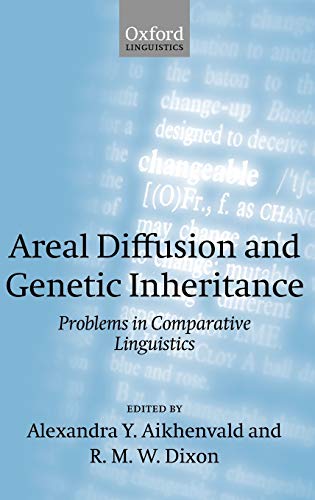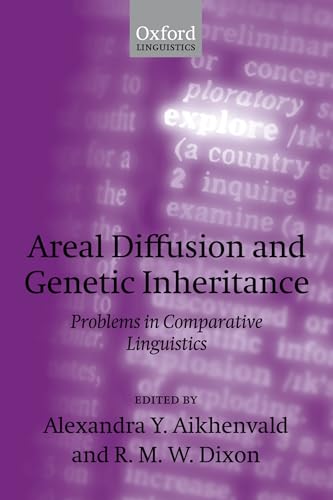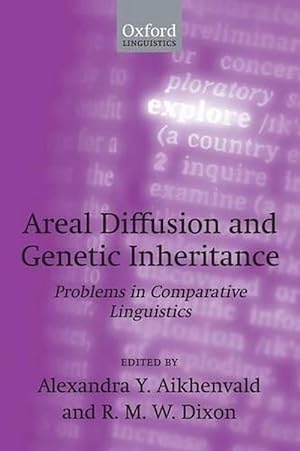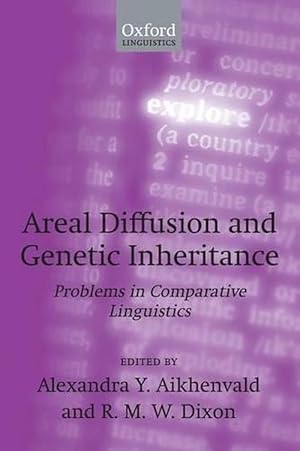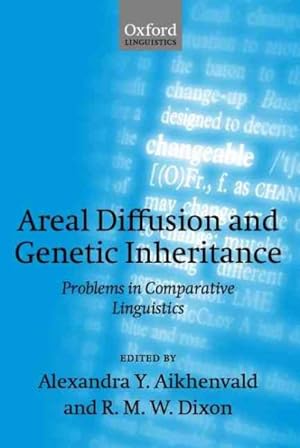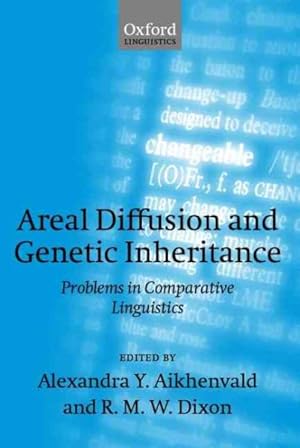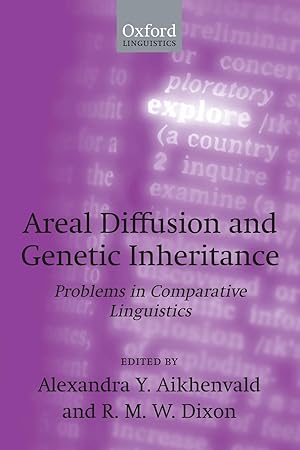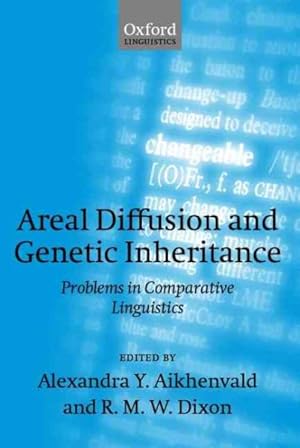areal diffusion genetic inheritance (47 resultados)
Filtros de búsqueda
Tipo de artículo
- Todos los tipos de productos
- Libros (47)
- Revistas y publicaciones (No hay ningún otro resultado que coincida con este filtro.)
- Cómics (No hay ningún otro resultado que coincida con este filtro.)
- Partituras (No hay ningún otro resultado que coincida con este filtro.)
- Arte, grabados y pósters (No hay ningún otro resultado que coincida con este filtro.)
- Fotografías (No hay ningún otro resultado que coincida con este filtro.)
- Mapas (No hay ningún otro resultado que coincida con este filtro.)
- Manuscritos y coleccionismo de papel (No hay ningún otro resultado que coincida con este filtro.)
Condición Más información
- Nuevo (34)
- Como nuevo, Excelente o Muy bueno (8)
- Bueno o Aceptable (3)
- Regular o Pobre (No hay ningún otro resultado que coincida con este filtro.)
- Tal como se indica (2)
Encuadernación
Más atributos
- Primera edición (1)
- Firmado (No hay ningún otro resultado que coincida con este filtro.)
- Sobrecubierta (3)
- Con imágenes (21)
- No impresión bajo demanda (31)
Idioma (2)
Gastos de envío gratis
Ubicación del vendedor
Valoración de los vendedores
-
Areal Diffusion and Genetic Inheritance. Problems in Comparative Linguistics.
Publicado por Oxford-New York, Oxford University Press. 2001, 2002
ISBN 10: 0198299818 ISBN 13: 9780198299813
Idioma: Inglés
Librería: Antiquariaat Schot, Hendrik-Ido-Ambacht, Holanda
EUR 22,80
EUR 25,00 gastos de envío desde Holanda a Estados Unidos de AmericaCantidad disponible: 1 disponibles
Añadir al carritoOriginal publisher's black paper-covered boards, gilt title spine, blue dustjacket, thick 8vo: xvi, 454pp., introduction, 15 contributions with foot- & chapternotes and references - conclusions &c., list contributors, abbreviations, index authors, index languages & language families, index subjects, table of contents. CONTRIBUTORS: Alexandra Y. Aikhenvald - R.M.W. Dixonh - Peter Bellwood - Calvert Watkins - Alan Dench - Malcolm Ross - Geoffrey Haig - Randy J. LaPolla - N.J. Enfield - James A. Matisoff - Hilary Chappell - Gerrit J. Dimmendaal - Bernd Heine - Tania Kuteva - Timothy Jowan Curnow. Very fine copy - as new. Volume Oxford Linguistics.
-
Areal Diffusion and Genetic Inheritance Problems in Comparative Linguistics
Publicado por Oxford University Press, 2006
ISBN 10: 0199283087 ISBN 13: 9780199283088
Idioma: Inglés
Librería: Cider Creek Books, Newark, NJ, Estados Unidos de America
Original o primera edición
EUR 45,14
EUR 5,89 gastos de envío en Estados Unidos de AmericaCantidad disponible: 1 disponibles
Añadir al carritoPaperback. Condición: As New. First Paperback Edition; First Printing. Oxford University Press, 2006. 1st edition, 1st paperback printing. Originally published in 2001. Xvi + [454] pp. Light dust smudge bottom of text block. As New otherwise. ; Explorations In Linguistic Typology; 8vo 8" - 9" tall; 470 pages.
-
Areal Diffusion and Genetic Inheritance: Problems in Comparative Linguistics (Explorations in Linguistic Typology)
Publicado por Oxford University Press, UK, 2006
ISBN 10: 0199283087 ISBN 13: 9780199283088
Idioma: Inglés
Librería: Harry Righton, Evesham, Reino Unido
EUR 41,01
EUR 13,65 gastos de envío desde Reino Unido a Estados Unidos de AmericaCantidad disponible: 1 disponibles
Añadir al carritoSoft cover. Condición: Very Good. 453 pages. Size: 8vo - over 7¾ - 9¾" tall. Book.
-
Areal Diffusion and Genetic Inheritance: Problems in Comparative Linguistics (Explorations in Linguistic Typology)
Publicado por Oxford University Press, U.S.A., 2002
ISBN 10: 0198299818 ISBN 13: 9780198299813
Idioma: Inglés
Librería: Feldman's Books, Menlo Park, CA, Estados Unidos de America
EUR 62,59
EUR 3,91 gastos de envío en Estados Unidos de AmericaCantidad disponible: 1 disponibles
Añadir al carritoHardcover. Condición: Fine. Estado de la sobrecubierta: Near Fine. 1st Edition. Clean and unmarked.
-
Areal Diffusion and Genetic Inheritance: Problems in Comparative Linguistics (Explorations in Linguistic Typology)
Publicado por Oxford University Press, USA February 2002, 2002
ISBN 10: 0198299818 ISBN 13: 9780198299813
Idioma: Inglés
Librería: Eighth Day Books, LLC, Wichita, KS, Estados Unidos de America
EUR 67,06
EUR 5,17 gastos de envío en Estados Unidos de AmericaCantidad disponible: 1 disponibles
Añadir al carritoHardcover. Condición: As New. Estado de la sobrecubierta: As New. As new, in as new jacket.
-
Areal Diffusion and Genetic Inheritance: Problems in Comparative Linguistics (Explorations in Linguistic Typology)
Publicado por Oxford University Press, 2006
ISBN 10: 0199283087 ISBN 13: 9780199283088
Idioma: Inglés
Librería: Swan Trading Company, GEORGETOWN, TX, Estados Unidos de America
EUR 72,78
Gratis gastos de envío en Estados Unidos de AmericaCantidad disponible: 1 disponibles
Añadir al carritopaperback. Condición: Good. Softcover shows moderate cover wear. Text has some underlining. Ships FAST!
-
Areal Diffusion and Genetic Inheritance: Problems in Comparative Linguistics (Explorations in Linguistic Typology)
Publicado por Oxford University Press, 2006
ISBN 10: 0199283087 ISBN 13: 9780199283088
Idioma: Inglés
Librería: HPB-Red, Dallas, TX, Estados Unidos de America
EUR 69,60
EUR 3,26 gastos de envío en Estados Unidos de AmericaCantidad disponible: 1 disponibles
Añadir al carritoPaperback. Condición: Good. Connecting readers with great books since 1972! Used textbooks may not include companion materials such as access codes, etc. May have some wear or writing/highlighting. We ship orders daily and Customer Service is our top priority!
-
Areal Diffusion And Genetic Inheritance : Problems in Comparative Linguistics
Publicado por Oxford University Press, 2006
ISBN 10: 0199283087 ISBN 13: 9780199283088
Idioma: Inglés
Librería: GreatBookPrices, Columbia, MD, Estados Unidos de America
EUR 75,91
EUR 2,29 gastos de envío en Estados Unidos de AmericaCantidad disponible: Más de 20 disponibles
Añadir al carritoCondición: New.
-
Areal Diffusion And Genetic Inheritance : Problems in Comparative Linguistics
Publicado por Oxford University Press, 2006
ISBN 10: 0199283087 ISBN 13: 9780199283088
Idioma: Inglés
Librería: GreatBookPrices, Columbia, MD, Estados Unidos de America
EUR 78,96
EUR 2,29 gastos de envío en Estados Unidos de AmericaCantidad disponible: Más de 20 disponibles
Añadir al carritoCondición: As New. Unread book in perfect condition.
-
Areal Diffusion and Genetic Inheritance: Problems in Comparative Linguistics (Explorations in Linguistic Typology)
Publicado por Oxford University Press, 2006
ISBN 10: 0199283087 ISBN 13: 9780199283088
Idioma: Inglés
Librería: Ria Christie Collections, Uxbridge, Reino Unido
EUR 70,75
EUR 13,63 gastos de envío desde Reino Unido a Estados Unidos de AmericaCantidad disponible: Más de 20 disponibles
Añadir al carritoCondición: New. In.
-
Areal Diffusion and Genetic Inheritance: Problems in Comparative Linguistics
Librería: Chiron Media, Wallingford, Reino Unido
EUR 69,99
EUR 17,62 gastos de envío desde Reino Unido a Estados Unidos de AmericaCantidad disponible: 10 disponibles
Añadir al carritoPF. Condición: New.
-
Areal Diffusion And Genetic Inheritance : Problems in Comparative Linguistics
Publicado por Oxford University Press, 2006
ISBN 10: 0199283087 ISBN 13: 9780199283088
Idioma: Inglés
Librería: GreatBookPricesUK, Woodford Green, Reino Unido
EUR 70,74
EUR 17,06 gastos de envío desde Reino Unido a Estados Unidos de AmericaCantidad disponible: Más de 20 disponibles
Añadir al carritoCondición: New.
-
Areal Diffusion and Genetic Inheritance
Publicado por Oxford University Press, GB, 2006
ISBN 10: 0199283087 ISBN 13: 9780199283088
Idioma: Inglés
Librería: Rarewaves.com USA, London, LONDO, Reino Unido
EUR 91,20
Gratis gastos de envío desde Reino Unido a Estados Unidos de AmericaCantidad disponible: Más de 20 disponibles
Añadir al carritoPaperback. Condición: New. Two languages can resemble each other in the categories, constructions, and types of meaning they use; and in the forms they employ to express these. Such resemblances may be the consequence of universal characteristics of language, of chance or coincidence, of the borrowing by one language of another's words, or of the diffusion of grammatical, phonetic, and phonological characteristics that takes place when languages come into contact. Languages sometimes show likeness because they have borrowed not from each other but from a third language. Languages that come from the same ancestor may have similar grammatical categories and meanings expressed by similar forms: such languages are said to be genetically affiliated. This book considers how and why forms and meanings of different languages at different times may resemble one another. Its editors and authors aim (a) to explain and identify the relationship between areal diffusion and the genetic development of languages, and (b) to discover the means of distinguishing what may cause one language to share the characteristics of another. The introduction outlines the issues that underlie these aims, introduces the chapters which follow, and comments on recurrent conclusions by the contributors. The problems are formidable and the pitfalls numerous: for example, several of the authors draw attention to the inadequacy of the family tree diagram as the main metaphor for language relationship. The authors range over Ancient Anatolia, Modern Anatolia, Australia, Amazonia, Oceania, Southeast and East Asia, and Sub-Saharan Africa. The book includes an archaeologist's view on what material evidence offers to explain cultural and linguistic change, and a general discussion of which kinds of linguistic feature can and cannot be borrowed. The chapters are accessibly-written and illustrated by twenty maps. The book will interest all students of the causes and consequences of language change and evolution.
-
Areal Diffusion and Genetic Inheritance: Problems in Comparative Linguistics (Explorations in Linguistic Typology)
Publicado por Oxford University Press, 2006
ISBN 10: 0199283087 ISBN 13: 9780199283088
Idioma: Inglés
Librería: Lucky's Textbooks, Dallas, TX, Estados Unidos de America
EUR 93,59
EUR 3,46 gastos de envío en Estados Unidos de AmericaCantidad disponible: Más de 20 disponibles
Añadir al carritoCondición: New.
-
Areal Diffusion And Genetic Inheritance : Problems in Comparative Linguistics
Publicado por Oxford University Press, 2006
ISBN 10: 0199283087 ISBN 13: 9780199283088
Idioma: Inglés
Librería: GreatBookPricesUK, Woodford Green, Reino Unido
EUR 80,30
EUR 17,06 gastos de envío desde Reino Unido a Estados Unidos de AmericaCantidad disponible: Más de 20 disponibles
Añadir al carritoCondición: As New. Unread book in perfect condition.
-
Areal Diffusion and Genetic Inheritance (Paperback)
Publicado por Oxford University Press, Oxford, 2006
ISBN 10: 0199283087 ISBN 13: 9780199283088
Idioma: Inglés
Librería: AussieBookSeller, Truganina, VIC, Australia
EUR 75,43
EUR 32,12 gastos de envío desde Australia a Estados Unidos de AmericaCantidad disponible: 1 disponibles
Añadir al carritoPaperback. Condición: new. Paperback. Two languages can resemble each other in the categories, constructions, and types of meaning they use; and in the forms they employ to express these. Such resemblances may be the consequence of universal characteristics of language, of chance or coincidence, of the borrowing by one language of another's words, or of the diffusion of grammatical, phonetic, and phonological characteristics that takes place when languages come into contact. Languages sometimes showlikeness because they have borrowed not from each other but from a third language. Languages that come from the same ancestor may have similar grammatical categories and meanings expressed by similarforms: such languages are said to be genetically affiliated. This book considers how and why forms and meanings of different languages at different times may resemble one another. Its editors and authors aim (a) to explain and identify the relationship between areal diffusion and the genetic development of languages, and (b) to discover the means of distinguishing what may cause one language to share the characteristics of another. The introduction outlines the issues thatunderlie these aims, introduces the chapters which follow, and comments on recurrent conclusions by the contributors. The problems are formidable and the pitfalls numerous: for example, several of theauthors draw attention to the inadequacy of the family tree diagram as the main metaphor for language relationship. The authors range over Ancient Anatolia, Modern Anatolia, Australia, Amazonia, Oceania, Southeast and East Asia, and Sub-Saharan Africa. The book includes an archaeologist's view on what material evidence offers to explain cultural and linguistic change, and a general discussion of which kinds of linguistic feature can and cannot be borrowed. The chapters areaccessibly-written and illustrated by twenty maps. The book will interest all students of the causes and consequences of language change and evolution. Considers how and why forms and meanings of different languages at different times may resemble each other. This book investigates the relationship between a real diffusion and the genetic development of languages, and reveals the means of distinguishing what may cause one language to share the characteristics of another. Shipping may be from our Sydney, NSW warehouse or from our UK or US warehouse, depending on stock availability.
-
Areal Diffusion and Genetic Inheritance (Paperback)
Publicado por Oxford University Press, Oxford, 2006
ISBN 10: 0199283087 ISBN 13: 9780199283088
Idioma: Inglés
Librería: Grand Eagle Retail, Bensenville, IL, Estados Unidos de America
EUR 113,13
Gratis gastos de envío en Estados Unidos de AmericaCantidad disponible: 1 disponibles
Añadir al carritoPaperback. Condición: new. Paperback. Two languages can resemble each other in the categories, constructions, and types of meaning they use; and in the forms they employ to express these. Such resemblances may be the consequence of universal characteristics of language, of chance or coincidence, of the borrowing by one language of another's words, or of the diffusion of grammatical, phonetic, and phonological characteristics that takes place when languages come into contact. Languages sometimes showlikeness because they have borrowed not from each other but from a third language. Languages that come from the same ancestor may have similar grammatical categories and meanings expressed by similarforms: such languages are said to be genetically affiliated. This book considers how and why forms and meanings of different languages at different times may resemble one another. Its editors and authors aim (a) to explain and identify the relationship between areal diffusion and the genetic development of languages, and (b) to discover the means of distinguishing what may cause one language to share the characteristics of another. The introduction outlines the issues thatunderlie these aims, introduces the chapters which follow, and comments on recurrent conclusions by the contributors. The problems are formidable and the pitfalls numerous: for example, several of theauthors draw attention to the inadequacy of the family tree diagram as the main metaphor for language relationship. The authors range over Ancient Anatolia, Modern Anatolia, Australia, Amazonia, Oceania, Southeast and East Asia, and Sub-Saharan Africa. The book includes an archaeologist's view on what material evidence offers to explain cultural and linguistic change, and a general discussion of which kinds of linguistic feature can and cannot be borrowed. The chapters areaccessibly-written and illustrated by twenty maps. The book will interest all students of the causes and consequences of language change and evolution. Considers how and why forms and meanings of different languages at different times may resemble each other. This book investigates the relationship between a real diffusion and the genetic development of languages, and reveals the means of distinguishing what may cause one language to share the characteristics of another. Shipping may be from multiple locations in the US or from the UK, depending on stock availability.
-
Areal Diffusion and Genetic Inheritance : Problems in Comparative Linguistics
Publicado por Oxford University Press, 2002
ISBN 10: 0198299818 ISBN 13: 9780198299813
Idioma: Inglés
Librería: GreatBookPrices, Columbia, MD, Estados Unidos de America
EUR 116,52
EUR 2,29 gastos de envío en Estados Unidos de AmericaCantidad disponible: Más de 20 disponibles
Añadir al carritoCondición: New.
-
Areal Diffusion and Genetic Inheritance: Problems in Comparative Linguistics (Explorations in Linguistic Typology)
Publicado por Oxford University Press, 2002
ISBN 10: 0198299818 ISBN 13: 9780198299813
Idioma: Inglés
Librería: Lucky's Textbooks, Dallas, TX, Estados Unidos de America
EUR 115,32
EUR 3,46 gastos de envío en Estados Unidos de AmericaCantidad disponible: Más de 20 disponibles
Añadir al carritoCondición: New.
-
Areal Diffusion and Genetic Inheritance : Problems in Comparative Linguistics
Publicado por Oxford University Press, 2002
ISBN 10: 0198299818 ISBN 13: 9780198299813
Idioma: Inglés
Librería: GreatBookPrices, Columbia, MD, Estados Unidos de America
EUR 133,51
EUR 2,29 gastos de envío en Estados Unidos de AmericaCantidad disponible: Más de 20 disponibles
Añadir al carritoCondición: As New. Unread book in perfect condition.
-
EUR 82,53
EUR 48,99 gastos de envío desde Alemania a Estados Unidos de AmericaCantidad disponible: Más de 20 disponibles
Añadir al carritoCondición: New. Considers how and why forms and meanings of different languages at different times may resemble each other. This book investigates the relationship between a real diffusion and the genetic development of languages, and reveals the means of distinguishing wh.
-
Areal Diffusion and Genetic Inheritance : Problems in Comparative Linguistics
Publicado por Oxford University Press, 2002
ISBN 10: 0198299818 ISBN 13: 9780198299813
Idioma: Inglés
Librería: GreatBookPricesUK, Woodford Green, Reino Unido
EUR 121,87
EUR 17,06 gastos de envío desde Reino Unido a Estados Unidos de AmericaCantidad disponible: Más de 20 disponibles
Añadir al carritoCondición: New.
-
Areal Diffusion and Genetic Inheritance
Publicado por Oxford University Press, GB, 2006
ISBN 10: 0199283087 ISBN 13: 9780199283088
Idioma: Inglés
Librería: Rarewaves.com UK, London, Reino Unido
EUR 85,50
EUR 73,95 gastos de envío desde Reino Unido a Estados Unidos de AmericaCantidad disponible: Más de 20 disponibles
Añadir al carritoPaperback. Condición: New. Two languages can resemble each other in the categories, constructions, and types of meaning they use; and in the forms they employ to express these. Such resemblances may be the consequence of universal characteristics of language, of chance or coincidence, of the borrowing by one language of another's words, or of the diffusion of grammatical, phonetic, and phonological characteristics that takes place when languages come into contact. Languages sometimes show likeness because they have borrowed not from each other but from a third language. Languages that come from the same ancestor may have similar grammatical categories and meanings expressed by similar forms: such languages are said to be genetically affiliated. This book considers how and why forms and meanings of different languages at different times may resemble one another. Its editors and authors aim (a) to explain and identify the relationship between areal diffusion and the genetic development of languages, and (b) to discover the means of distinguishing what may cause one language to share the characteristics of another. The introduction outlines the issues that underlie these aims, introduces the chapters which follow, and comments on recurrent conclusions by the contributors. The problems are formidable and the pitfalls numerous: for example, several of the authors draw attention to the inadequacy of the family tree diagram as the main metaphor for language relationship. The authors range over Ancient Anatolia, Modern Anatolia, Australia, Amazonia, Oceania, Southeast and East Asia, and Sub-Saharan Africa. The book includes an archaeologist's view on what material evidence offers to explain cultural and linguistic change, and a general discussion of which kinds of linguistic feature can and cannot be borrowed. The chapters are accessibly-written and illustrated by twenty maps. The book will interest all students of the causes and consequences of language change and evolution.
-
Areal Diffusion and Genetic Inheritance: Problems in Comparative Linguistics
Publicado por Oxford University Press, 2002
ISBN 10: 0198299818 ISBN 13: 9780198299813
Idioma: Inglés
Librería: THE SAINT BOOKSTORE, Southport, Reino Unido
EUR 151,93
EUR 21,89 gastos de envío desde Reino Unido a Estados Unidos de AmericaCantidad disponible: 15 disponibles
Añadir al carritoHardback. Condición: New. New copy - Usually dispatched within 4 working days.
-
Areal Diffusion and Genetic Inheritance (Hardcover)
Publicado por Oxford University Press, Oxford, 2001
ISBN 10: 0198299818 ISBN 13: 9780198299813
Idioma: Inglés
Librería: CitiRetail, Stevenage, Reino Unido
EUR 148,80
EUR 42,09 gastos de envío desde Reino Unido a Estados Unidos de AmericaCantidad disponible: 1 disponibles
Añadir al carritoHardcover. Condición: new. Hardcover. Two languages can resemble each other in the categories, constructions, and types of meaning they use, and in the forms they employ to express these. Such resemblances may be the consequence of universal characteristics of language, of chance or coincidence, of the borrowing by one language of another's words, or of the diffusion of grammatical, phonetic, and phonological characteristics that takes place when languages come into contact. Languages sometimes showlikeness because they have borrowed not from each other but from a third language. Languages that come from the same ancestor may have similar grammatical categories and meanings expressed by similarforms: such languages are said to be genetically affiliated.This book considers how and why forms and meanings of different languages at different times may resemble one another. Its editors and authors aim (a) to explain and identify the relationship between areal diffusion and the genetic development of languages, and (b) to discover the means of distinguishing what may cause one language to share the characteristics of another. The introduction outlines the issues thatunderlie these aims, introduces the chapters which follow, and comments on recurrent conclusions by the contributors. The problems are formidable and the pitfalls numerous: for example, several of theauthors draw attention to the inadequacy of the family tree diagram as the main metaphor for language relationship. The authors range over Ancient Anatolia, Modern Anatolia, Australia, Amazonia, Oceania, Southeast and East Asia, and Sub-Saharan Africa. The book includes an archaeologist's view on what material evidence offers to explain cultural and linguistic change, and a general discussion of which kinds of linguistic feature can and cannot be borrowed. The chaptersare accessibly-written and illustrated by twenty maps. The book will interest all students of the causes and consequences of language change and evolution. Considers how and why forms and meanings of different languages at different times may resemble each other. This book investigates the relationship between areal diffusion and the genetic development of languages. The chapters cover Ancient Anatolia, Modern Anatolia, Australia, Amazonia, Oceania, Southeast and East Asia, and Sub-Saharan Africa. Shipping may be from our UK warehouse or from our Australian or US warehouses, depending on stock availability.
-
Areal Diffusion and Genetic Inheritance
Librería: Books Puddle, New York, NY, Estados Unidos de America
EUR 191,70
EUR 3,46 gastos de envío en Estados Unidos de AmericaCantidad disponible: 4 disponibles
Añadir al carritoCondición: New. pp. 472.
-
Areal Diffusion and Genetic Inheritance: Problems in Comparative Linguistics (Explorations in Linguistic Typology)
Publicado por Oxford University Press, 2002
ISBN 10: 0198299818 ISBN 13: 9780198299813
Idioma: Inglés
Librería: Ria Christie Collections, Uxbridge, Reino Unido
EUR 235,54
EUR 13,63 gastos de envío desde Reino Unido a Estados Unidos de AmericaCantidad disponible: Más de 20 disponibles
Añadir al carritoCondición: New. In.
-
Areal Diffusion and Genetic Inheritance : Problems in Comparative Linguistics
Publicado por Oxford University Press, 2002
ISBN 10: 0198299818 ISBN 13: 9780198299813
Idioma: Inglés
Librería: GreatBookPricesUK, Woodford Green, Reino Unido
EUR 241,37
EUR 17,06 gastos de envío desde Reino Unido a Estados Unidos de AmericaCantidad disponible: Más de 20 disponibles
Añadir al carritoCondición: As New. Unread book in perfect condition.
-
Areal Diffusion and Genetic Inheritance: Problems in Comparative Linguistics (Explorations in Linguistic Typology)
Publicado por Oxford University Press, 2002
ISBN 10: 0198299818 ISBN 13: 9780198299813
Idioma: Inglés
Librería: Mispah books, Redhill, SURRE, Reino Unido
EUR 232,01
EUR 28,44 gastos de envío desde Reino Unido a Estados Unidos de AmericaCantidad disponible: 1 disponibles
Añadir al carritoHardcover. Condición: Like New. Like New. book.
-
Areal Diffusion and Genetic Inheritance (Hardcover)
Publicado por Oxford University Press, Oxford, 2001
ISBN 10: 0198299818 ISBN 13: 9780198299813
Idioma: Inglés
Librería: AussieBookSeller, Truganina, VIC, Australia
EUR 260,87
EUR 32,12 gastos de envío desde Australia a Estados Unidos de AmericaCantidad disponible: 1 disponibles
Añadir al carritoHardcover. Condición: new. Hardcover. Two languages can resemble each other in the categories, constructions, and types of meaning they use, and in the forms they employ to express these. Such resemblances may be the consequence of universal characteristics of language, of chance or coincidence, of the borrowing by one language of another's words, or of the diffusion of grammatical, phonetic, and phonological characteristics that takes place when languages come into contact. Languages sometimes showlikeness because they have borrowed not from each other but from a third language. Languages that come from the same ancestor may have similar grammatical categories and meanings expressed by similarforms: such languages are said to be genetically affiliated.This book considers how and why forms and meanings of different languages at different times may resemble one another. Its editors and authors aim (a) to explain and identify the relationship between areal diffusion and the genetic development of languages, and (b) to discover the means of distinguishing what may cause one language to share the characteristics of another. The introduction outlines the issues thatunderlie these aims, introduces the chapters which follow, and comments on recurrent conclusions by the contributors. The problems are formidable and the pitfalls numerous: for example, several of theauthors draw attention to the inadequacy of the family tree diagram as the main metaphor for language relationship. The authors range over Ancient Anatolia, Modern Anatolia, Australia, Amazonia, Oceania, Southeast and East Asia, and Sub-Saharan Africa. The book includes an archaeologist's view on what material evidence offers to explain cultural and linguistic change, and a general discussion of which kinds of linguistic feature can and cannot be borrowed. The chaptersare accessibly-written and illustrated by twenty maps. The book will interest all students of the causes and consequences of language change and evolution. Considers how and why forms and meanings of different languages at different times may resemble each other. This book investigates the relationship between areal diffusion and the genetic development of languages. The chapters cover Ancient Anatolia, Modern Anatolia, Australia, Amazonia, Oceania, Southeast and East Asia, and Sub-Saharan Africa. Shipping may be from our Sydney, NSW warehouse or from our UK or US warehouse, depending on stock availability.


